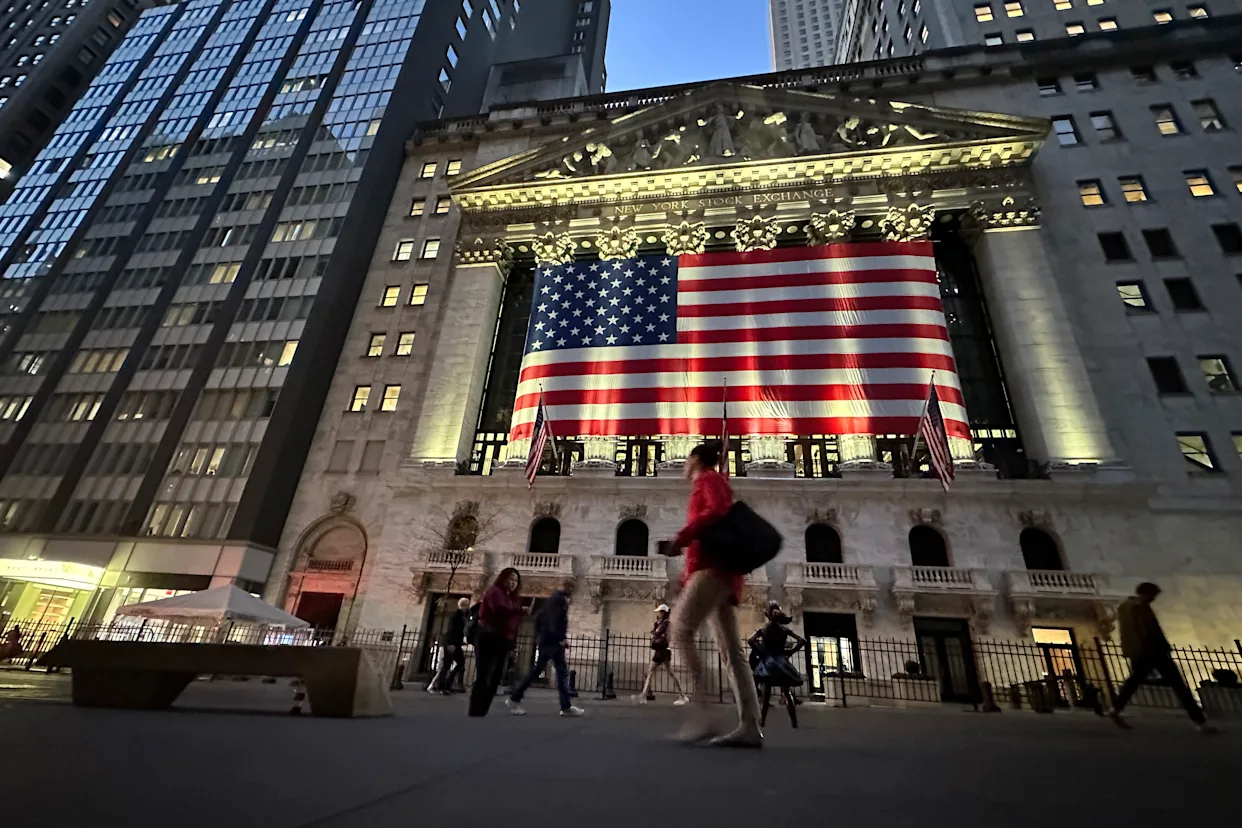New York — U.S. stocks closed the third quarter on a muted note Tuesday, with major indexes drifting lower as investors balanced strong quarterly gains against the uncertainty of a looming government shutdown and mixed economic data.
The S&P 500 slipped modestly by the closing bell, while the Nasdaq Composite fell more sharply, weighed down by weakness in big-tech and communication services names. The Dow Jones Industrial Average, by contrast, managed to hold steady, supported by industrial and defensive stocks that are often favored during periods of uncertainty.
A Mixed Day for Equities
The day’s trading showed a split personality across Wall Street. Growth-oriented sectors struggled, especially communication services, which saw heavy losses from technology giants like Meta and Alphabet. Consumer discretionary stocks also pulled back, reflecting investor caution about household spending resilience heading into the holiday season.
At the same time, the technology and healthcare sectors showed resilience, providing balance to the session. Chipmaker optimism and strong healthcare earnings helped these groups outperform.
Among standout movers:
- Wolfspeed rocketed more than 30% after completing bankruptcy proceedings and outlining a fresh capital plan.
- Lamb Weston posted a double-digit gain after reporting earnings well above Wall Street expectations.
- In contrast, Paychex tumbled over 5% following disappointing guidance that suggested headwinds in payroll and small-business activity.
The Shutdown Overhang
Investors were squarely focused on Washington, where Congress remains deadlocked over short-term funding. A federal shutdown would temporarily halt key economic data releases, including the closely watched September jobs report, complicating the Federal Reserve’s policy calculus.
Analysts note that while shutdowns rarely trigger lasting financial damage, they tend to unsettle markets and add volatility. The timing is particularly sensitive given the Fed’s cautious tone about the labor market and inflation. “The issue isn’t the shutdown itself as much as the uncertainty it injects into an already fragile environment,” one market strategist commented.
Economic Signals: Mixed but Resilient
The macroeconomic picture provided both encouragement and warning signs. Job openings came in stronger than expected, pointing to a still-tight labor market, while consumer confidence fell sharply, raising concerns about household resilience.
Fed officials struck a cautious balance. Several policymakers reiterated concerns about slowing job growth, yet left the door open to additional rate cuts later this year if momentum falters. That backdrop has left investors torn between optimism about easier monetary policy and anxiety about what would trigger such a shift.
Quarter Three in Review
Despite Tuesday’s quiet close, the third quarter ended positively for U.S. equities:
- The S&P 500 notched one of its strongest September performances in years.
- The Nasdaq Composite gained, though at a slower pace, reflecting both tech resilience and volatility.
- The Dow Jones Industrial Average benefited from defensive rotation, securing a solid quarterly advance.
These gains followed a summer of mixed signals — from cooling inflation to steady consumer demand — that kept markets buoyant despite recession worries.
What to Watch in the Fourth Quarter
As the new quarter begins, investors are preparing for what could be a pivotal stretch:
- Earnings season will provide clarity on corporate health, especially in tech, banking, and consumer sectors.
- Shutdown resolution remains a near-term wild card, capable of stirring volatility if prolonged.
- Federal Reserve signals will dominate sentiment, with traders eager to confirm whether rate cuts could materialize before year-end.
- Sector rotation may accelerate, with investors potentially shifting toward value, dividends, and defensives if volatility rises.
Market strategists warn that the optimism of Q3 could give way to choppier waters. “The fourth quarter tends to be strong historically, but the macro risks are higher than usual,” said one New York-based portfolio manager. “Investors will need to balance opportunity with caution.”
Final Take
Tuesday’s market pause may have felt uneventful, but it carried important signals: confidence remains intact after a solid quarter, yet nerves are rising about politics, data flow, and Fed strategy. With the holiday season approaching, the next few weeks could determine whether Wall Street finishes 2025 with momentum — or with a stumble into uncertainty.
















Leave a Reply